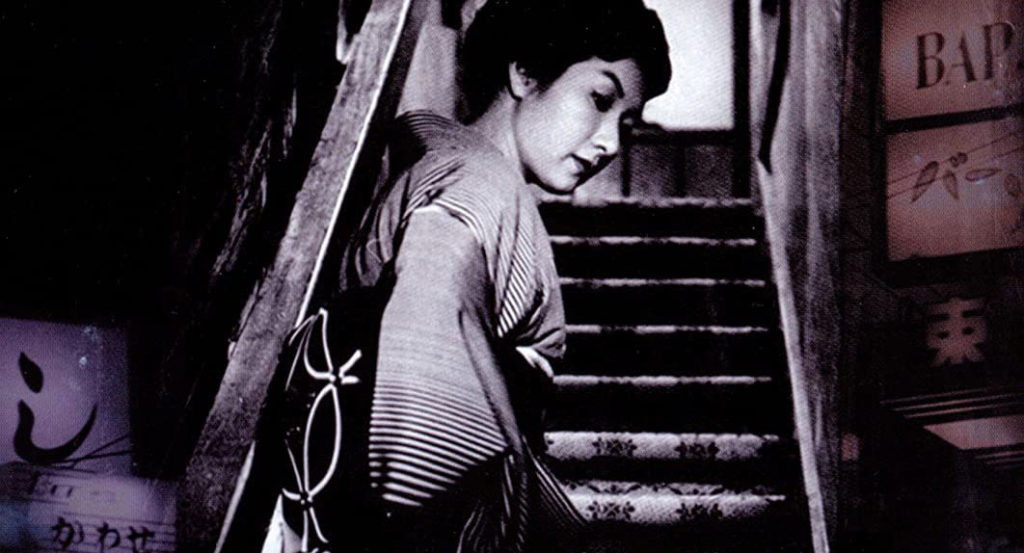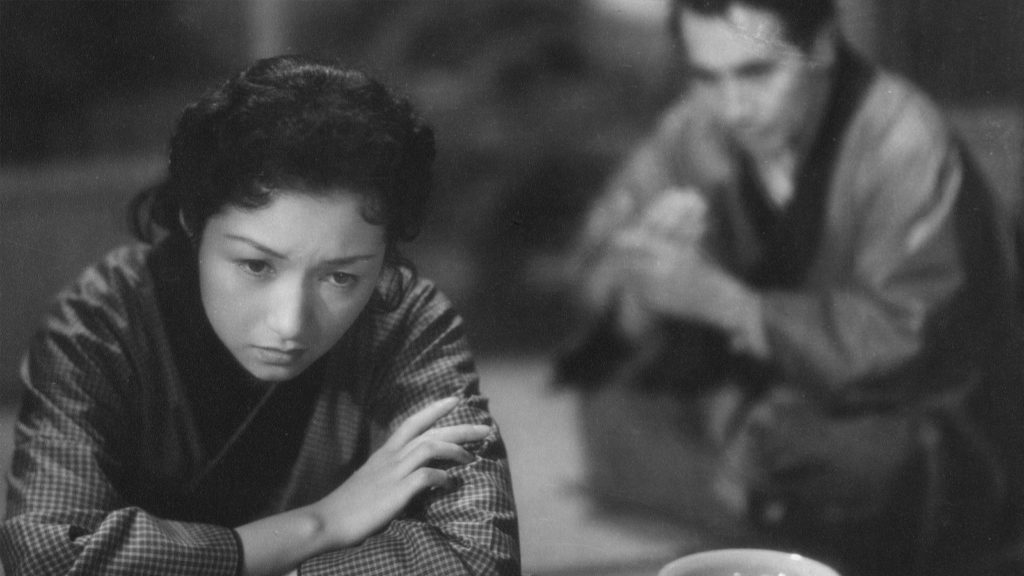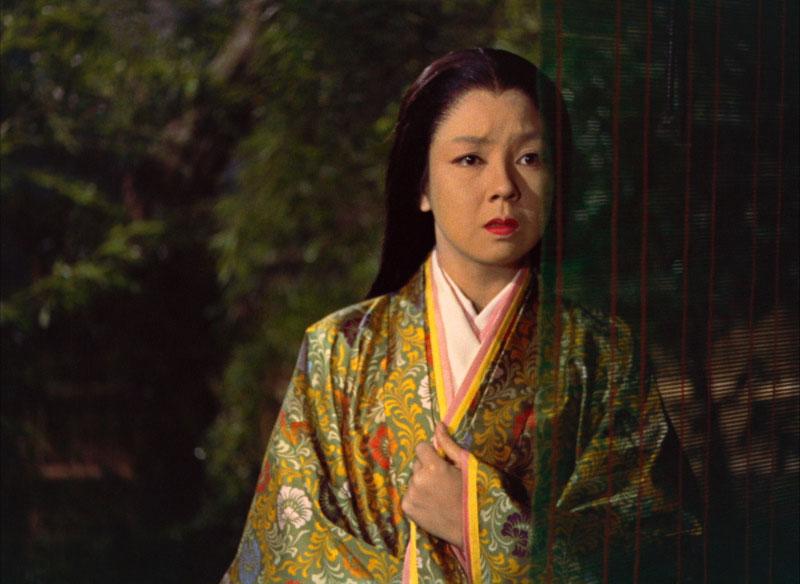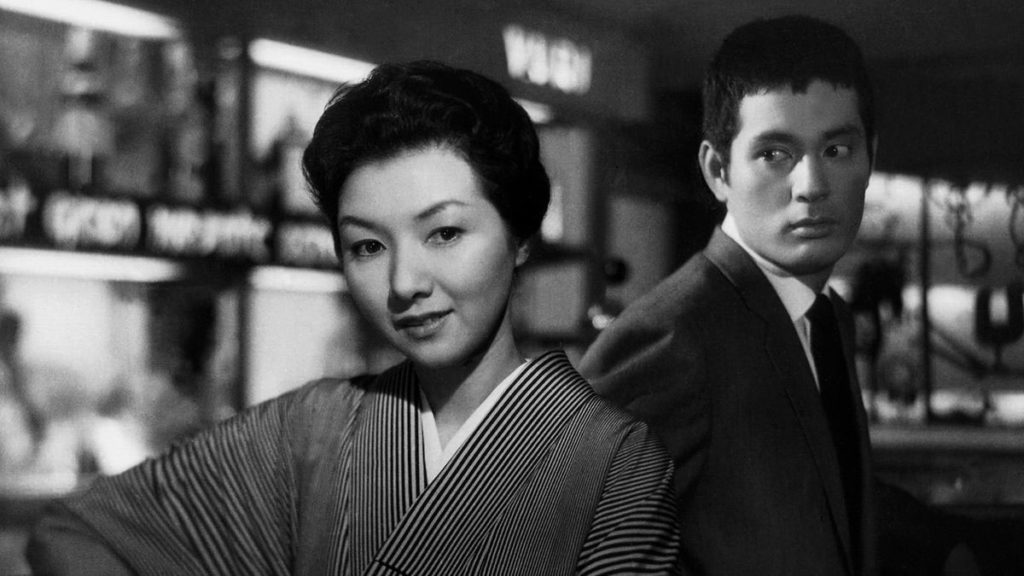
BFI Player is currently playing host to the excellent Japan 2020 season.
Its Japanese Classics collection showcases great movies from the Golden Ages of the 1930s and 1950s, the post-war generation who shook the system from the 1960s onward, plus the filmmakers who came to prominence in the 1980s and 1990s.
Spanning multiple genres, the collection contains some of the best films ever made. Choosing five you should start with was tough.
But, here is a quintet of movies we think provide a good introduction to the collection…
For more information on BFI Japan 2020, click here
To view Japan 2020 on BFI Player, click here
FLOATING CLOUDS (1955)

We make no apologies for this being the first of two Mikio Naruse films in our list. One of Japan’s finest directors, Naruse’s “women’s pictures” are consistently superb. Our two recommendations here are masterworks of post-war Japanese cinema.
In Kinema Junpo’s most recent Top 10 Japanese Films of All Time, Floating Clouds placed no.3, behind Tokyo Story and Seven Samurai.
Not surprising, as this study of a destructive relationship in the ruins of 1946 Tokyo is a fascinating examination of the country’s postwar mindset. Ex-Forestry employees Yukiko (Hideko Takamine) and Tomioka (Masayuki Mori), based in Vietnam during the war on a research project, repeatedly split up and then circle each other. They both profess love, he serially cheats and she spits invectives.
This doomed love affair could reflect the post-war national mood when the country was shattered by its defeat. Is Yukiko’s emotional masochism a tacit acknowledgement of postwar guilt or victimhood?
Naruse was working from Fumiko Hayashi’s source novel, his fifth adaptation of the author’s works. He and frequent collaborator Yôko Mizuki created a story more overtly melodramatic than usual for the director, but never allowed it to tip into hysterics.
Confidently structured, large ellipses are contained in simple cuts between scenes; intrigue generated as we discover if fortune is smiling upon or smiting the troubled couple.
Plausibly migrating from wounded lover to caustic survivalist, Takamine’s performance garnered her Best Actress at the 1956 Kinema Junpo Awards. Yukiko’s devotion to Tomioka could have been gigglesome with a lesser talent, but she conveys depths of conflicting emotions through a small gasp or bitter smile.
Naruse is not afraid to introduce dark subject matter (rape, suicide, abortion) and it is testament to Takamine that her character is not swamped by hardship.
Floating Clouds also features background details of post-war Japan – Yukiko briefly dates an American G.I., her loathsome brother-in-law begins a scam cult to fleece anxious city folk.
Frequent, expressionistic rainfall swells to a climactic typhoon when nature itself seems to rage against the injustice suffered by Takamine’s heroine. Breathtaking.
GATE OF HELL (1953)

Martin Scorsese declared Gate of Hell one of the ten best colour achievements in world cinema. When watching Teinosuke Kinugasa’s film in HD or on a flawless print we see what impressed the director of Silence. Unfolding like a gallery of beautiful paintings, this unpredictable story of obsession deploys colour and costume to illustrate passions that will consume the lead characters.
With Gate of Hell his only widely available film, Kinugasa is likely unfamiliar even to audiences up on their Mizoguchi, Ozu and Oshima. The director began his career influenced by the surrealist movement of the 1920s, and that rejection of the expected carries into this film.
Set in 1160, the opening act concerns a coup d’etat staged by insurrectionists aiming to overthrow the governing Taira Clan. As a palace is stormed in the frenetic opening scenes a barrage of names and allegiances are fired at the audience. But, the rebellion is crushed, offscreen no less, and Gate of Hell turns its attention to another story for the remainder of the film.
Now, it follows Kazuo Hasegawa’s low-ranking samurai Morito, and his obsession with Machiko Kyô’s lady-in-waiting, Kesa. With Kesa married to upstanding samurai Watanabe (Isao Yamagata), Morito’s plans for marriage seem thwarted. But, unhinged with obsession he sets everyone on a path to destruction.
After the initial flurry of action, Gate of Hell becomes a statelier film than Kurosawa’s samurai adventures. But, at 89 minutes it briskly tells the story and deftly shifts sympathy away from Morito as his madness escalates. The traditional, atonal score, which grows in prominence as the film progresses, provides indicators of his mental state.
Best known to Western audiences of Japanese cinema for Kurosawa’s Rashomon (1950), Machiko Kyô was one of Japan’s star actresses. The sensuality in her performing style was comparable to Marilyn Monroe, yet here she plays against type as the respectable lady-in-waiting, devoted to her husband. But, in a performance of nuance and subtle gesture, Kyô hints at a passion that wants to break the rigid parameters of court life.
Gate of Hell won the Grand Prize at Cannes (now the Palme D’or), plus Oscars for Best Foreign Language Film and Best Costume Design. Deserving of wider recognition, this is the perfect opportunity to plunge into Kinugasa’s tale of madness.
YOUTH OF THE BEAST (1963)

Director Seijun Suzuki had made almost 30 movies in seven years, most of them crime stories, by the time he arrived at Youth of the Beast. Small wonder then it has the hysterical energy of someone looking for a fresh angle on yet another yakuza tale.
The basic plot echoes Akira Kurosawa’s Yojimbo, released two years earlier, and is based on a novel by legendary crime writer Haruhiko Oyabu, whose work heavily influenced Japanese gangster movies of the period. Indeed, Youth of the Beast is the second Oyabu novel Suzuki adapted in 1963, the first being the wonderfully named Detective Bureau 2-3: Go To Hell Bastards! They don’t title ‘em like that anymore…
There is a suspicion (not confirmed) that Suzuki allowed audience familiarity with the source novel and Yojimbo to do the heavy plot lifting for him, as the film seems impatient in setting out its story. Characters and incident are tossed out with amphetamine-rush abandon as we see Jo Shishido’s enforcer Jo Mizuno join the powerful Nomoto crime family, while also plotting sabotage with the rival Sanko gang. Could any of this be connected to the apparent double suicide of a cop and his mistress that opens the film?
Youth of the Beast does resolve its multiple plot threads for those paying attention to the story, but the real delights come from the directorial exuberance Suzuki delivers. The camera artfully swoops amidst violent mayhem occurring in vividly coloured sets, pulp crime movies permanently projected on a crime boss’ office wall go unremarked upon, cackling gangsters crammed into compact cars stage in transit heists, and cold turkey is played with the intensity of Shakespearean death scenes.
The colour red is a vivid through-line in props, décor and costume, culminating in Jo crouching in a full-bloom rose bush as he witnesses a climactic revelation.
Cartoonishly villainous characters are flamboyantly brought to life by a cast who understand the register at which Suzuki is working.
Akiji Kobayashi’s Nomoto resembles a buttoned-down accountant but is fuelled by sexual sadism and a fondness for animals: one scene opens with him practically making out with his cat. And they both take their time.
Tamio Kawaji is equally memorable as Nomoto’s gay brother, who responds with a mean straight-razor to anyone who mentions his mum’s prostitute past.
Youth of the Beast was an inspiration on the Lupin the 3rd anime series, but also seems like source material for much of what Takashi Miike would do with his bursts of yakuza insanity in the ‘90s and 2000s.
Manoeuvring through this is Jo Shishido, his distinctive hamster cheeks the result of elective plastic surgery the actor underwent in 1956. Most of the time Shishido lets these cheeks do the emoting, but he is the cool, charismatic anchor Suzuki needs for his bizarre criminal fantasies.
The director’s films would continue to grow more confrontational and challenging over the next few years, producing several classics including The Story of a Prostitute, The Fighting Elegy and Tokyo Drifter.
In 1967, Suzuki delivered the five-star crime film Branded to Kill, featuring Shishido as an assassin being hunted after a botched hit. Inventive, astonishing and gorgeously shot in black and white Nikkatsuscope widescreen, it is a must-see.
Nikkatsu studio hated it so much they fired Suzuki. After this he found funding difficult and would complete only ten more feature films between his firing and his retirement in 2005. A criminal waste.
ONIBABA (1964)

When working his way up the ranks of Japan’s hierarchical film industry, Kaneto Shindô mentored under director Kenji Mizoguchi. Mizoguchi was famed for women’s melodramas, which left a mark on Shindô, whose films typically feature memorable female characters.
With one crucial difference: Shindô embraced the fantastic more than his mentor and brought a darker world view to his movies.
Partly this may be due to his 21-month stint in the navy during World War Two. Shindô would carry the guilt of being one of only six survivors from a 100-man crew. The director’s socialist political leanings also gave certain films a more firebrand aesthetic.
Onibaba is arguably his best movie. An unnerving tale of spectral revenge, it would influence The Exorcist and later the J-Horror wave that dominated Japanese cinema as the century closed.
Set in rural 14th-century Japan, the film follows two women scavenging to survive as civil war rips the country apart. Shindô ‘s business partner and future wife Nobuko Otowa plays the older woman. Along with her daughter-in-law (Jitsuko Yoshimura), the peasant woman ambushes unsuspecting samurai in the vast, swaying fields of pampas grass near their hut.
Murdering the samurai, they use the plunder to trade for food. Problems arise when a soldier (Kei Satô) returns from the war without the daughter-in-law’s husband. With the mother fearing the younger woman will abandon her for the soldier, she begins to scheme…
Onibaba depicts a world literally turning hellish through war, with the natural order upended. Summer frosts kill crops, the sun is black in the sky, and sexual desire kills rather than creates. In this world, if someone’s face is a mask hiding dark intentions another mask will reveal their true nature…
The title translates as Demon Hag, and a diabolical atmosphere courses through the film. All of this proved too much for the BBFC back in 1965, who rejected Onibaba. It was passed as an “X” in 1968, but only after cuts. Now it’s uncut, cert. 15 and should be watched by any teenager who likes their horror dark.
WHEN A WOMAN ASCENDS THE STAIRS (1960)

We end where we began, with another classic movie from Mikio Naruse and a flawless performance from Hideko Takamine (who on this film also acted as costume designer).
Here, Takamine plays Keiko, a 30-year-old hostess at the Carton Bar in Tokyo’s chic Ginza district. Keiko’s job is to “host” the wealthy, male clients who frequent the classy watering hole. She pours their drinks, lights their cigarettes and laughs at their jokes. She also politely deflects their advances, marking her as different from many of her colleagues. All of whom call her by the honorific “Mama”, which in this world doubles as a sly reminder of her age.
Naturally, Keiko’s refinement and elegance makes her appealing to the clientele. But, she is aware that her age will soon count against her. Keiko has two options, find a husband, or become mistress to a “patron” who will bankroll her own bar.
When A Woman Ascends the Stairs is shot in cool, black and white Tohoscope widescreen, set to a bluesy score. Both visuals and soundtrack reflect the heroine’s emotional state. In tone the film is similar to Billy Wilder’s The Apartment; even though not as obviously comedic, a sharp line in dark wit runs throughout.
Naruse’s style is unfussy yet captivating, perfect compositions and lighting designs framing Keiko’s successes and misfortunes. This being female melodrama, there are more of the latter than the former.
The director and his scriptwriter Ryûzô Kikushima (who frequently collaborated with Kurosawa, including on Stray Dog) also delve into the mechanics of hostess life. Including the endless expense incurred at presenting yourself as a luxury item for male attention, compounded by Keiko’s family calling on her for support.
Takamine’s flair for understated resilience prevents Keiko from succumbing to tragic heroine syndrome. The film also surrounds her with formidable acting talent. Her Floating Clouds co-star Masayuki Mori here is, ironically, the one man she loves. Seven Samurai’s Daisuke Katô makes an impact as a pathetic suitor. The legendary Tatsuya Nakadai of Yojimbo and The Human Condition is the Carton Bar’s manager and Hideko’s antagonist-cum-confidant.
A superlative example of the tail-end of Japanese cinema’s second Golden Age, When A Woman Ascends the Stairs is one of Japan 2020’s most vital movies.
Rob Daniel
Twitter: rob_a_Daniel
iTunes Podcast: The Movie Robcast

Pingback: BFI Player's Japan 2020 Anime Collections showcases Hosoda Mamoru